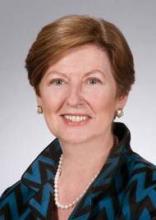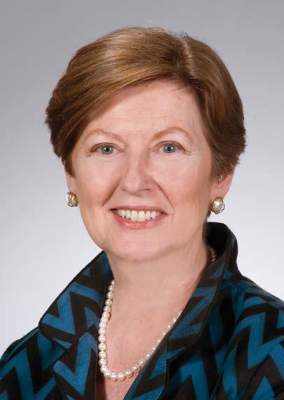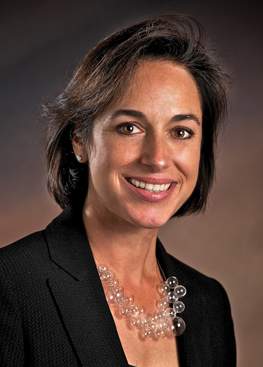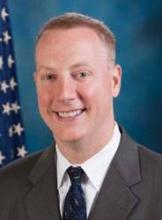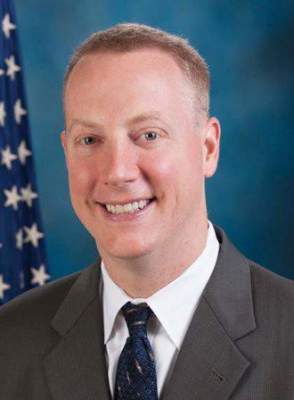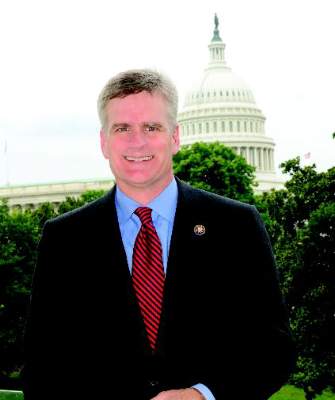User login
NCQA reports declines in behavioral health quality
Clinicians are failing to make improvements in the quality of behavioral health care, particularly lagging in follow-up after hospitalizations for mental health, according to a report from the National Committee for Quality Assurance.
The annual “State of Health Care Quality” report found that quality scores declined for follow-up after hospitalization for mental health both at 7 days and at 30 days after discharge. Health plans reported to the NCQA that between 34% and 55% of patients received outpatient follow-up within 7 days, and 54%-73% received 30-day follow-up. Initiating and continuing treatment for alcohol and other drug dependence also dropped, with health plans reporting that between 34% and 40% of patients were started on treatment within 14 days of diagnosis in 2013.
Even in areas where there was statistically significant improvement, such as in follow-up care for children prescribed ADHD medication, less than half of patients were receiving the recommended care, according to the NCQA report.
“We know that people who have behavioral health issues are often very high users of medical care as well, and so there is both a quality argument to be made and a value argument to be made about appropriate treatment for behavioral health conditions,” said Margaret E. O’Kane, NCQA president.
Across 139 measures covering several health domains, the NCQA found a mixed picture of quality. The report, which is based on 2013 data, showed consistent and statistically significant improvement on 64 quality measures over the last 3-5 years. But 11 measures showed consistent declines in quality over the same time period, and another 64 measures had mixed results, showing no statistical trend.
“We can do better, and we know that as policymakers and payers become more strategic about their desire to drive a quality message, we actually can see the results of that,” Ms. O’Kane said during a webinar on the report’s findings.
The NCQA quality report card is based on voluntary reporting of HEDIS (Healthcare Effectiveness Data and Information Set) measures from 814 HMOs and 353 PPOs covering about 171 million individuals.
The NCQA will continue to focus on measuring behavioral health measures in the hopes of improving quality, Ms. O’Kane said. In next year’s report, the NCQA will publish results for three new behavioral health measures: the use of multiple concurrent antipsychotics in children and adolescents, metabolic monitoring for children and adolescents on antipsychotics, and the use of first-line psychosocial care for children and adolescents on antipsychotics.
On Twitter @maryellenny
Clinicians are failing to make improvements in the quality of behavioral health care, particularly lagging in follow-up after hospitalizations for mental health, according to a report from the National Committee for Quality Assurance.
The annual “State of Health Care Quality” report found that quality scores declined for follow-up after hospitalization for mental health both at 7 days and at 30 days after discharge. Health plans reported to the NCQA that between 34% and 55% of patients received outpatient follow-up within 7 days, and 54%-73% received 30-day follow-up. Initiating and continuing treatment for alcohol and other drug dependence also dropped, with health plans reporting that between 34% and 40% of patients were started on treatment within 14 days of diagnosis in 2013.
Even in areas where there was statistically significant improvement, such as in follow-up care for children prescribed ADHD medication, less than half of patients were receiving the recommended care, according to the NCQA report.
“We know that people who have behavioral health issues are often very high users of medical care as well, and so there is both a quality argument to be made and a value argument to be made about appropriate treatment for behavioral health conditions,” said Margaret E. O’Kane, NCQA president.
Across 139 measures covering several health domains, the NCQA found a mixed picture of quality. The report, which is based on 2013 data, showed consistent and statistically significant improvement on 64 quality measures over the last 3-5 years. But 11 measures showed consistent declines in quality over the same time period, and another 64 measures had mixed results, showing no statistical trend.
“We can do better, and we know that as policymakers and payers become more strategic about their desire to drive a quality message, we actually can see the results of that,” Ms. O’Kane said during a webinar on the report’s findings.
The NCQA quality report card is based on voluntary reporting of HEDIS (Healthcare Effectiveness Data and Information Set) measures from 814 HMOs and 353 PPOs covering about 171 million individuals.
The NCQA will continue to focus on measuring behavioral health measures in the hopes of improving quality, Ms. O’Kane said. In next year’s report, the NCQA will publish results for three new behavioral health measures: the use of multiple concurrent antipsychotics in children and adolescents, metabolic monitoring for children and adolescents on antipsychotics, and the use of first-line psychosocial care for children and adolescents on antipsychotics.
On Twitter @maryellenny
Clinicians are failing to make improvements in the quality of behavioral health care, particularly lagging in follow-up after hospitalizations for mental health, according to a report from the National Committee for Quality Assurance.
The annual “State of Health Care Quality” report found that quality scores declined for follow-up after hospitalization for mental health both at 7 days and at 30 days after discharge. Health plans reported to the NCQA that between 34% and 55% of patients received outpatient follow-up within 7 days, and 54%-73% received 30-day follow-up. Initiating and continuing treatment for alcohol and other drug dependence also dropped, with health plans reporting that between 34% and 40% of patients were started on treatment within 14 days of diagnosis in 2013.
Even in areas where there was statistically significant improvement, such as in follow-up care for children prescribed ADHD medication, less than half of patients were receiving the recommended care, according to the NCQA report.
“We know that people who have behavioral health issues are often very high users of medical care as well, and so there is both a quality argument to be made and a value argument to be made about appropriate treatment for behavioral health conditions,” said Margaret E. O’Kane, NCQA president.
Across 139 measures covering several health domains, the NCQA found a mixed picture of quality. The report, which is based on 2013 data, showed consistent and statistically significant improvement on 64 quality measures over the last 3-5 years. But 11 measures showed consistent declines in quality over the same time period, and another 64 measures had mixed results, showing no statistical trend.
“We can do better, and we know that as policymakers and payers become more strategic about their desire to drive a quality message, we actually can see the results of that,” Ms. O’Kane said during a webinar on the report’s findings.
The NCQA quality report card is based on voluntary reporting of HEDIS (Healthcare Effectiveness Data and Information Set) measures from 814 HMOs and 353 PPOs covering about 171 million individuals.
The NCQA will continue to focus on measuring behavioral health measures in the hopes of improving quality, Ms. O’Kane said. In next year’s report, the NCQA will publish results for three new behavioral health measures: the use of multiple concurrent antipsychotics in children and adolescents, metabolic monitoring for children and adolescents on antipsychotics, and the use of first-line psychosocial care for children and adolescents on antipsychotics.
On Twitter @maryellenny
NQF endorses hospital medication reconciliation measure
Is a lax medication reconciliation process producing errors at your hospital? The National Quality Forum has endorsed a new quality measure aimed at identifying medication discrepancies and the process gaps that caused them. Measure #2456, officially endorsed by the NQF in September, assesses the quality of a hospital’s medication reconciliation process by identifying errors in admission and discharge orders. Here’s how it works: At the time of admission, hospital medication orders are compared with the preadmission medication list, which is compiled by a pharmacist. At discharge, the pharmacist repeats the process using both the preadmission list and any medications ordered during the hospitalization.
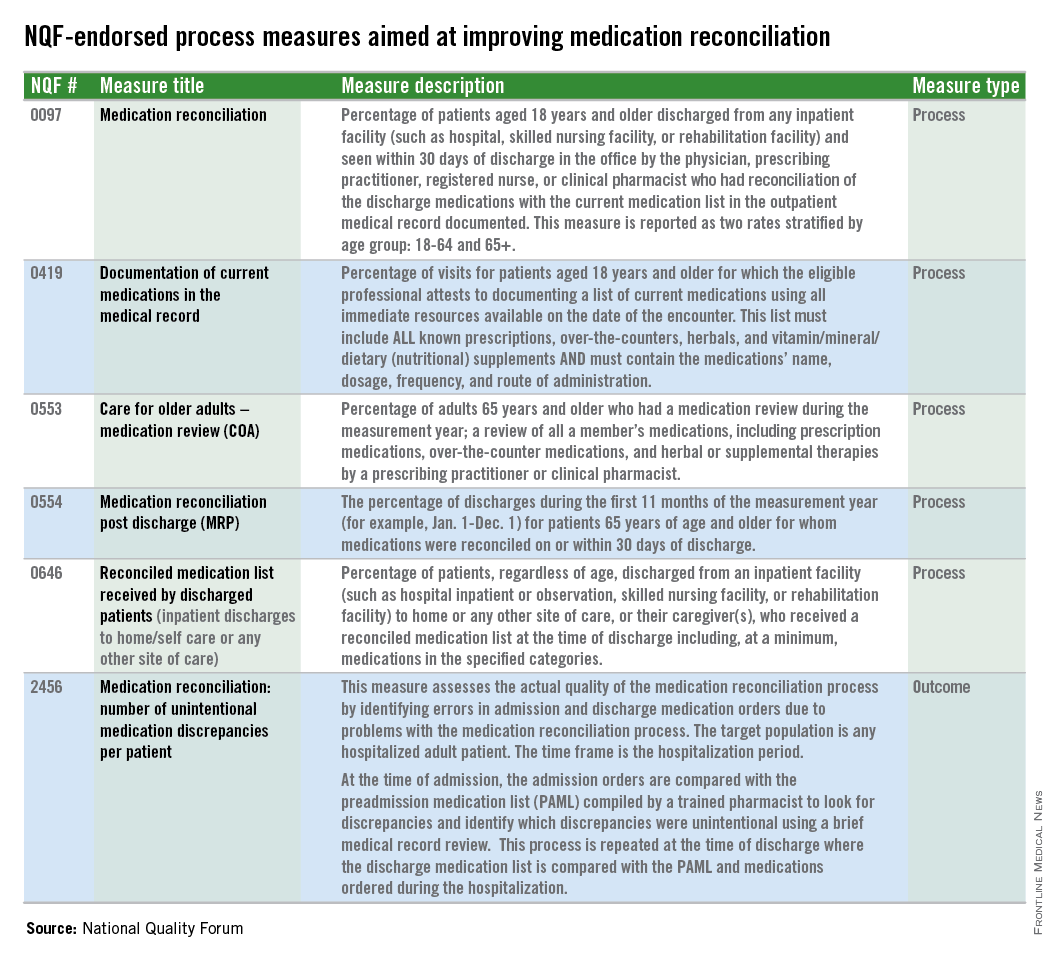
This type of review can help identify both history errors and reconciliation errors. History errors occur when a mistake in the history leads to an error in the medication order. For instance, if the clinical team in the hospital didn’t know a patient was on aspirin when they were admitted, they wouldn’t order it at admission.
If the history is correct, but the medication orders don’t match the preadmission medication list, that could be an intentional change by the care team or a reconciliation error.
The pharmacist can usually determine which one it is by reviewing the chart or consulting the care team, said Dr. Jeffrey L. Schnipper, a hospitalist at Brigham and Women’s Hospital in Boston, who proposed the new NQF measure.
The new measure joins five NQF-endorsed process measures aimed at improving medication reconciliation. But the new measure is the first outcome measure.
The Joint Commission also requires hospitals to engage in medication reconciliation, but that mandate is mostly pro forma, Dr. Schnipper said.
“It’s very much a process measure,” he said. “You say that you have a med rec process. You say that you’ve done med rec. Therefore, med rec is done. There really has been no national measure out there that looks at the actual quality of the med rec process you’re doing. Are you taking accurate medication histories and are you writing the correct orders based on those histories?”
Dr. Schnipper and his colleagues have been studying the issue of unintentional medication discrepancies for the last 5 years as part of the Multi-Center Medication Reconciliation Quality Improvement Study (MARQUIS). They found that there are about three unintentional medical discrepancies per patient on average, making reconciliation errors a larger source of medication errors than those caused by prescribing, transcribing, or administration. The error rate for potentially harmful medication discrepancies is about one-half per patient.
“There aren’t a whole lot of things out there where we tolerate a potentially harmful error in every other patient,” Dr. Schnipper said.
Hospitals won’t be required to take on the new measure right away. The measure will continue to be studied and tested over the next couple of years. But Dr. Schnipper said he’s hopeful that at the end of about 5 years, the measure could become part of some federal measurement programs, with financial incentives attached to performance on it.
One of the questions that still has to be studied is whether the measure will be adjusted for risk. More data will be available once the MARQUIS study is complete, Dr. Schnipper said, but early data suggests that it would need to be adjusted for patient age and the number of medications that a patient is taking.
Another question is whether hospitals will be evaluated based on the absolute number of medication discrepancies per patient or on their relative improvement over time. The final MARQUIS data are also expected to shed light on that issue.
Dr. Schnipper said he does not expect the new measure to be a drain on hospitals or physicians. As currently crafted, the measure would be used for about 22 patients per month and he estimates that it would take one full-time pharmacist or less to take a “gold standard” medication history and compare it with the preadmission and discharge medication lists. It would be no more labor intensive than the chart reviews undertaken by nurses to comply with the National Surgical Quality Improvement Program measures, he said.
Is a lax medication reconciliation process producing errors at your hospital? The National Quality Forum has endorsed a new quality measure aimed at identifying medication discrepancies and the process gaps that caused them. Measure #2456, officially endorsed by the NQF in September, assesses the quality of a hospital’s medication reconciliation process by identifying errors in admission and discharge orders. Here’s how it works: At the time of admission, hospital medication orders are compared with the preadmission medication list, which is compiled by a pharmacist. At discharge, the pharmacist repeats the process using both the preadmission list and any medications ordered during the hospitalization.

This type of review can help identify both history errors and reconciliation errors. History errors occur when a mistake in the history leads to an error in the medication order. For instance, if the clinical team in the hospital didn’t know a patient was on aspirin when they were admitted, they wouldn’t order it at admission.
If the history is correct, but the medication orders don’t match the preadmission medication list, that could be an intentional change by the care team or a reconciliation error.
The pharmacist can usually determine which one it is by reviewing the chart or consulting the care team, said Dr. Jeffrey L. Schnipper, a hospitalist at Brigham and Women’s Hospital in Boston, who proposed the new NQF measure.
The new measure joins five NQF-endorsed process measures aimed at improving medication reconciliation. But the new measure is the first outcome measure.
The Joint Commission also requires hospitals to engage in medication reconciliation, but that mandate is mostly pro forma, Dr. Schnipper said.
“It’s very much a process measure,” he said. “You say that you have a med rec process. You say that you’ve done med rec. Therefore, med rec is done. There really has been no national measure out there that looks at the actual quality of the med rec process you’re doing. Are you taking accurate medication histories and are you writing the correct orders based on those histories?”
Dr. Schnipper and his colleagues have been studying the issue of unintentional medication discrepancies for the last 5 years as part of the Multi-Center Medication Reconciliation Quality Improvement Study (MARQUIS). They found that there are about three unintentional medical discrepancies per patient on average, making reconciliation errors a larger source of medication errors than those caused by prescribing, transcribing, or administration. The error rate for potentially harmful medication discrepancies is about one-half per patient.
“There aren’t a whole lot of things out there where we tolerate a potentially harmful error in every other patient,” Dr. Schnipper said.
Hospitals won’t be required to take on the new measure right away. The measure will continue to be studied and tested over the next couple of years. But Dr. Schnipper said he’s hopeful that at the end of about 5 years, the measure could become part of some federal measurement programs, with financial incentives attached to performance on it.
One of the questions that still has to be studied is whether the measure will be adjusted for risk. More data will be available once the MARQUIS study is complete, Dr. Schnipper said, but early data suggests that it would need to be adjusted for patient age and the number of medications that a patient is taking.
Another question is whether hospitals will be evaluated based on the absolute number of medication discrepancies per patient or on their relative improvement over time. The final MARQUIS data are also expected to shed light on that issue.
Dr. Schnipper said he does not expect the new measure to be a drain on hospitals or physicians. As currently crafted, the measure would be used for about 22 patients per month and he estimates that it would take one full-time pharmacist or less to take a “gold standard” medication history and compare it with the preadmission and discharge medication lists. It would be no more labor intensive than the chart reviews undertaken by nurses to comply with the National Surgical Quality Improvement Program measures, he said.
Is a lax medication reconciliation process producing errors at your hospital? The National Quality Forum has endorsed a new quality measure aimed at identifying medication discrepancies and the process gaps that caused them. Measure #2456, officially endorsed by the NQF in September, assesses the quality of a hospital’s medication reconciliation process by identifying errors in admission and discharge orders. Here’s how it works: At the time of admission, hospital medication orders are compared with the preadmission medication list, which is compiled by a pharmacist. At discharge, the pharmacist repeats the process using both the preadmission list and any medications ordered during the hospitalization.

This type of review can help identify both history errors and reconciliation errors. History errors occur when a mistake in the history leads to an error in the medication order. For instance, if the clinical team in the hospital didn’t know a patient was on aspirin when they were admitted, they wouldn’t order it at admission.
If the history is correct, but the medication orders don’t match the preadmission medication list, that could be an intentional change by the care team or a reconciliation error.
The pharmacist can usually determine which one it is by reviewing the chart or consulting the care team, said Dr. Jeffrey L. Schnipper, a hospitalist at Brigham and Women’s Hospital in Boston, who proposed the new NQF measure.
The new measure joins five NQF-endorsed process measures aimed at improving medication reconciliation. But the new measure is the first outcome measure.
The Joint Commission also requires hospitals to engage in medication reconciliation, but that mandate is mostly pro forma, Dr. Schnipper said.
“It’s very much a process measure,” he said. “You say that you have a med rec process. You say that you’ve done med rec. Therefore, med rec is done. There really has been no national measure out there that looks at the actual quality of the med rec process you’re doing. Are you taking accurate medication histories and are you writing the correct orders based on those histories?”
Dr. Schnipper and his colleagues have been studying the issue of unintentional medication discrepancies for the last 5 years as part of the Multi-Center Medication Reconciliation Quality Improvement Study (MARQUIS). They found that there are about three unintentional medical discrepancies per patient on average, making reconciliation errors a larger source of medication errors than those caused by prescribing, transcribing, or administration. The error rate for potentially harmful medication discrepancies is about one-half per patient.
“There aren’t a whole lot of things out there where we tolerate a potentially harmful error in every other patient,” Dr. Schnipper said.
Hospitals won’t be required to take on the new measure right away. The measure will continue to be studied and tested over the next couple of years. But Dr. Schnipper said he’s hopeful that at the end of about 5 years, the measure could become part of some federal measurement programs, with financial incentives attached to performance on it.
One of the questions that still has to be studied is whether the measure will be adjusted for risk. More data will be available once the MARQUIS study is complete, Dr. Schnipper said, but early data suggests that it would need to be adjusted for patient age and the number of medications that a patient is taking.
Another question is whether hospitals will be evaluated based on the absolute number of medication discrepancies per patient or on their relative improvement over time. The final MARQUIS data are also expected to shed light on that issue.
Dr. Schnipper said he does not expect the new measure to be a drain on hospitals or physicians. As currently crafted, the measure would be used for about 22 patients per month and he estimates that it would take one full-time pharmacist or less to take a “gold standard” medication history and compare it with the preadmission and discharge medication lists. It would be no more labor intensive than the chart reviews undertaken by nurses to comply with the National Surgical Quality Improvement Program measures, he said.
DeSalvo leaves post to focus on Ebola response
Dr. Karen DeSalvo, who has served as National Coordinator for Health Information Technology for less than a year, is leaving her position to aid in public health efforts to contain Ebola in the United States.
On Oct. 23, the Office of the National Coordinator for Health IT (ONC) announced that effective immediately, Dr. DeSalvo would serve as acting assistant secretary for health at the Health and Human Services department.
Dr. DeSalvo will work with HHS Secretary Sylvia Burwell on “pressing public health issues, including becoming a part of the department’s team responding to Ebola,” according to Peter Ashkenaz, an ONC spokesman.
Lisa Lewis, ONC’s chief operating officer, will take the reins at ONC as acting national coordinator. But Dr. DeSalvo will continue to be available to the ONC team to support their work, Mr. Ashkenaz said.
Before coming to HHS, Dr. DeSalvo served as health commissioner for the City of New Orleans, where she helped modernize the city’s health department and helped establish a public hospital. Before working for the city, she was a professor of medicine and vice dean for community affairs and health policy at Tulane University, New Orleans.
On Twitter @maryellenny
Dr. Karen DeSalvo, who has served as National Coordinator for Health Information Technology for less than a year, is leaving her position to aid in public health efforts to contain Ebola in the United States.
On Oct. 23, the Office of the National Coordinator for Health IT (ONC) announced that effective immediately, Dr. DeSalvo would serve as acting assistant secretary for health at the Health and Human Services department.
Dr. DeSalvo will work with HHS Secretary Sylvia Burwell on “pressing public health issues, including becoming a part of the department’s team responding to Ebola,” according to Peter Ashkenaz, an ONC spokesman.
Lisa Lewis, ONC’s chief operating officer, will take the reins at ONC as acting national coordinator. But Dr. DeSalvo will continue to be available to the ONC team to support their work, Mr. Ashkenaz said.
Before coming to HHS, Dr. DeSalvo served as health commissioner for the City of New Orleans, where she helped modernize the city’s health department and helped establish a public hospital. Before working for the city, she was a professor of medicine and vice dean for community affairs and health policy at Tulane University, New Orleans.
On Twitter @maryellenny
Dr. Karen DeSalvo, who has served as National Coordinator for Health Information Technology for less than a year, is leaving her position to aid in public health efforts to contain Ebola in the United States.
On Oct. 23, the Office of the National Coordinator for Health IT (ONC) announced that effective immediately, Dr. DeSalvo would serve as acting assistant secretary for health at the Health and Human Services department.
Dr. DeSalvo will work with HHS Secretary Sylvia Burwell on “pressing public health issues, including becoming a part of the department’s team responding to Ebola,” according to Peter Ashkenaz, an ONC spokesman.
Lisa Lewis, ONC’s chief operating officer, will take the reins at ONC as acting national coordinator. But Dr. DeSalvo will continue to be available to the ONC team to support their work, Mr. Ashkenaz said.
Before coming to HHS, Dr. DeSalvo served as health commissioner for the City of New Orleans, where she helped modernize the city’s health department and helped establish a public hospital. Before working for the city, she was a professor of medicine and vice dean for community affairs and health policy at Tulane University, New Orleans.
On Twitter @maryellenny
CMS offers $840 million to networks that aid physicians
The federal government is offering up to $840 million to physician networks that help other clinicians improve the way that they communicate with patients and how they use technology for quality improvement.
The 4-year project, run by the Centers for Medicare & Medicaid Services, is expected to help support 150,000 clinicians nationwide and ultimately save the government between $1 billion and $4 billion.
“Clinicians want to spend time with their patients, coordinate care, and improve patient outcomes, and CMS wants to be a collaborative partner helping clinicians achieve those goals,” Dr. Patrick Conway, CMS chief medical officer, said during a press briefing Oct. 23.
The bulk of the newly available funding will go to so-called Practice Transformation Networks. Those networks will be made up of large group practices, health care systems, regional extension centers, and others that have had measurable success in improving quality by implementing electronic health records, coordinating care, or reducing hospital readmissions. The networks will be expected to provide assistance and coaching to other medical practices, especially those in rural and underserved areas.
“These networks will create peer-to-peer support, help identify proven best practices, and assist clinicians in collecting and understanding the data needed to improve quality,” Dr. Conway said.
For instance, a Practice Transformation Network might work directly with a practice on population health management, teaching the clinicians how to identify patients with multiple chronic conditions who would need a higher level of care, Dr. Conway said.
CMS expects to award about 35 grants of between $2 million and $5 million each to Practice Transformation Networks that have preexisting relationships with multiple primary care and specialty practices. The networks will also need to be able to share data between sites, according to the CMS funding announcement.
CMS will also fund Support and Alignment Networks as part of the new initiative. These networks could include medical professional associations and specialty societies that would help identify evidence-based best practices and rapidly spread them to their members. CMS said it expects to award about 30 grants for these networks, with funding ranging from $1 million to $3 million.
The funding is designed to help set physicians up for success in the midst of the changing health care delivery and payment system, where payments are increasingly tied to efficiency and quality improvement, Dr. Conway said.
“The initiative is not about giving physicians advice on how to run their practices,” he said. “Rather we are working to support clinicians and physicians and other experts to expand their improvements and transformation capacity.”
The new initiative was praised by physician organizations, including the American Medical Association and the American Osteopathic Association.
The funding “creates necessary incentives for 150,000 physicians to transform their practices by adopting new and innovative payment models, including the patient-centered medical home,” said Dr. Robert S. Juhasz, president of the American Osteopathic Association.
The application period runs from Oct. 23, 2014 through Jan. 6, 2015. CMS is encouraging potential applicants to submit a nonbinding letter of intent to apply by Nov. 20.
On Twitter @maryellenny
The federal government is offering up to $840 million to physician networks that help other clinicians improve the way that they communicate with patients and how they use technology for quality improvement.
The 4-year project, run by the Centers for Medicare & Medicaid Services, is expected to help support 150,000 clinicians nationwide and ultimately save the government between $1 billion and $4 billion.
“Clinicians want to spend time with their patients, coordinate care, and improve patient outcomes, and CMS wants to be a collaborative partner helping clinicians achieve those goals,” Dr. Patrick Conway, CMS chief medical officer, said during a press briefing Oct. 23.
The bulk of the newly available funding will go to so-called Practice Transformation Networks. Those networks will be made up of large group practices, health care systems, regional extension centers, and others that have had measurable success in improving quality by implementing electronic health records, coordinating care, or reducing hospital readmissions. The networks will be expected to provide assistance and coaching to other medical practices, especially those in rural and underserved areas.
“These networks will create peer-to-peer support, help identify proven best practices, and assist clinicians in collecting and understanding the data needed to improve quality,” Dr. Conway said.
For instance, a Practice Transformation Network might work directly with a practice on population health management, teaching the clinicians how to identify patients with multiple chronic conditions who would need a higher level of care, Dr. Conway said.
CMS expects to award about 35 grants of between $2 million and $5 million each to Practice Transformation Networks that have preexisting relationships with multiple primary care and specialty practices. The networks will also need to be able to share data between sites, according to the CMS funding announcement.
CMS will also fund Support and Alignment Networks as part of the new initiative. These networks could include medical professional associations and specialty societies that would help identify evidence-based best practices and rapidly spread them to their members. CMS said it expects to award about 30 grants for these networks, with funding ranging from $1 million to $3 million.
The funding is designed to help set physicians up for success in the midst of the changing health care delivery and payment system, where payments are increasingly tied to efficiency and quality improvement, Dr. Conway said.
“The initiative is not about giving physicians advice on how to run their practices,” he said. “Rather we are working to support clinicians and physicians and other experts to expand their improvements and transformation capacity.”
The new initiative was praised by physician organizations, including the American Medical Association and the American Osteopathic Association.
The funding “creates necessary incentives for 150,000 physicians to transform their practices by adopting new and innovative payment models, including the patient-centered medical home,” said Dr. Robert S. Juhasz, president of the American Osteopathic Association.
The application period runs from Oct. 23, 2014 through Jan. 6, 2015. CMS is encouraging potential applicants to submit a nonbinding letter of intent to apply by Nov. 20.
On Twitter @maryellenny
The federal government is offering up to $840 million to physician networks that help other clinicians improve the way that they communicate with patients and how they use technology for quality improvement.
The 4-year project, run by the Centers for Medicare & Medicaid Services, is expected to help support 150,000 clinicians nationwide and ultimately save the government between $1 billion and $4 billion.
“Clinicians want to spend time with their patients, coordinate care, and improve patient outcomes, and CMS wants to be a collaborative partner helping clinicians achieve those goals,” Dr. Patrick Conway, CMS chief medical officer, said during a press briefing Oct. 23.
The bulk of the newly available funding will go to so-called Practice Transformation Networks. Those networks will be made up of large group practices, health care systems, regional extension centers, and others that have had measurable success in improving quality by implementing electronic health records, coordinating care, or reducing hospital readmissions. The networks will be expected to provide assistance and coaching to other medical practices, especially those in rural and underserved areas.
“These networks will create peer-to-peer support, help identify proven best practices, and assist clinicians in collecting and understanding the data needed to improve quality,” Dr. Conway said.
For instance, a Practice Transformation Network might work directly with a practice on population health management, teaching the clinicians how to identify patients with multiple chronic conditions who would need a higher level of care, Dr. Conway said.
CMS expects to award about 35 grants of between $2 million and $5 million each to Practice Transformation Networks that have preexisting relationships with multiple primary care and specialty practices. The networks will also need to be able to share data between sites, according to the CMS funding announcement.
CMS will also fund Support and Alignment Networks as part of the new initiative. These networks could include medical professional associations and specialty societies that would help identify evidence-based best practices and rapidly spread them to their members. CMS said it expects to award about 30 grants for these networks, with funding ranging from $1 million to $3 million.
The funding is designed to help set physicians up for success in the midst of the changing health care delivery and payment system, where payments are increasingly tied to efficiency and quality improvement, Dr. Conway said.
“The initiative is not about giving physicians advice on how to run their practices,” he said. “Rather we are working to support clinicians and physicians and other experts to expand their improvements and transformation capacity.”
The new initiative was praised by physician organizations, including the American Medical Association and the American Osteopathic Association.
The funding “creates necessary incentives for 150,000 physicians to transform their practices by adopting new and innovative payment models, including the patient-centered medical home,” said Dr. Robert S. Juhasz, president of the American Osteopathic Association.
The application period runs from Oct. 23, 2014 through Jan. 6, 2015. CMS is encouraging potential applicants to submit a nonbinding letter of intent to apply by Nov. 20.
On Twitter @maryellenny
Studies: Practice consolidation drives up costs
The consolidation of physician practices, once considered a way to curb spending, seems to be costing the health care system more money, according to the findings of two studies published Oct. 21 in JAMA.
When researchers examined the prices paid by private preferred provider organizations (PPOs) for 10 types of common office visits, they found that the prices were higher in areas where there was less competition among physicians. The study examined the impact of competition across 10 specialties: internal medicine, family medicine, cardiology, dermatology, gastroenterology, neurology, general surgery, orthopedics, urology, and otolaryngology (JAMA 2014;312:1653-62).
Looking at claims paid in 2010 across 1,058 U.S. counties, Laurence C. Baker, Ph.D., of Stanford (Calif.) University, and his colleagues found that in areas with the lowest amount of physician competition (measured as the 90th percentile on the Hirschman-Herfindahl Index of economic competition), an intermediate office visit with an established patient (CPT code 99213) was between $5.85 and $11.67 higher than in areas with the greatest amount of physician competition (10th percentile).
When measured across 10 types of office visits (CPT codes 99201-99205, 99211-99215), average office visit prices ranged from 8.3% to 16.1% higher in areas with less competition. A more conservative model estimated that average prices were 3.5% to 5.4% higher.
The higher prices may be justified if these larger practices are producing higher quality care, the researchers wrote, but more information is needed to determine the full implications.
The study was funded by the National Institute for Health Care Management. Three of the study authors reported receiving consulting fees from the National Institute for Health Care Management and one of the authors received consulting fees from Kaiser Permanente and the American Hospital Association.
A second study, also published Oct. 21 in JAMA, found that hospital ownership of physician practices was associated with higher spending than in physician-owned practices (JAMA 2014;312:1663-9).
James C. Robinson, Ph.D., of the University of California, Berkeley, and Kelly Miller of the Integrated Healthcare Association in Oakland, compared total spending on 4.5 million patients treated by integrated medical groups and independent practice associations in California between 2009 and 2012. All the patients included in the study were covered by commercial health maintenance organizations (HMOs).
Total spending was 10.3% higher in local hospital-owned physician organizations than in physician-owned organizations, after adjustment for patient severity, geographic costs, and other factors. Spending was 19.8% higher in practices owned by multihospital systems, compared with physician-owned organizations.
The largest organizations had spending that was 9.2% higher than the smallest organizations, according to the study.
Of the 158 organizations studied, 75% were physician-owned organizations, 12% were owned by local hospitals, and 13% were owned by multihospital systems.
“These findings are in contrast to the hope and expectation that organizational consolidation of physicians with hospital would result in greater coordination, and hence lower expenditures,” the researchers wrote. “Policy makers must strive to ensure that hospital acquisition of medical groups and physician practices does not lead to higher expenditures.”
The study was funded by the Robert Wood Johnson Foundation. The researchers reported that they had no financial disclosures.
On Twitter @maryellenny
The consolidation of physician practices, once considered a way to curb spending, seems to be costing the health care system more money, according to the findings of two studies published Oct. 21 in JAMA.
When researchers examined the prices paid by private preferred provider organizations (PPOs) for 10 types of common office visits, they found that the prices were higher in areas where there was less competition among physicians. The study examined the impact of competition across 10 specialties: internal medicine, family medicine, cardiology, dermatology, gastroenterology, neurology, general surgery, orthopedics, urology, and otolaryngology (JAMA 2014;312:1653-62).
Looking at claims paid in 2010 across 1,058 U.S. counties, Laurence C. Baker, Ph.D., of Stanford (Calif.) University, and his colleagues found that in areas with the lowest amount of physician competition (measured as the 90th percentile on the Hirschman-Herfindahl Index of economic competition), an intermediate office visit with an established patient (CPT code 99213) was between $5.85 and $11.67 higher than in areas with the greatest amount of physician competition (10th percentile).
When measured across 10 types of office visits (CPT codes 99201-99205, 99211-99215), average office visit prices ranged from 8.3% to 16.1% higher in areas with less competition. A more conservative model estimated that average prices were 3.5% to 5.4% higher.
The higher prices may be justified if these larger practices are producing higher quality care, the researchers wrote, but more information is needed to determine the full implications.
The study was funded by the National Institute for Health Care Management. Three of the study authors reported receiving consulting fees from the National Institute for Health Care Management and one of the authors received consulting fees from Kaiser Permanente and the American Hospital Association.
A second study, also published Oct. 21 in JAMA, found that hospital ownership of physician practices was associated with higher spending than in physician-owned practices (JAMA 2014;312:1663-9).
James C. Robinson, Ph.D., of the University of California, Berkeley, and Kelly Miller of the Integrated Healthcare Association in Oakland, compared total spending on 4.5 million patients treated by integrated medical groups and independent practice associations in California between 2009 and 2012. All the patients included in the study were covered by commercial health maintenance organizations (HMOs).
Total spending was 10.3% higher in local hospital-owned physician organizations than in physician-owned organizations, after adjustment for patient severity, geographic costs, and other factors. Spending was 19.8% higher in practices owned by multihospital systems, compared with physician-owned organizations.
The largest organizations had spending that was 9.2% higher than the smallest organizations, according to the study.
Of the 158 organizations studied, 75% were physician-owned organizations, 12% were owned by local hospitals, and 13% were owned by multihospital systems.
“These findings are in contrast to the hope and expectation that organizational consolidation of physicians with hospital would result in greater coordination, and hence lower expenditures,” the researchers wrote. “Policy makers must strive to ensure that hospital acquisition of medical groups and physician practices does not lead to higher expenditures.”
The study was funded by the Robert Wood Johnson Foundation. The researchers reported that they had no financial disclosures.
On Twitter @maryellenny
The consolidation of physician practices, once considered a way to curb spending, seems to be costing the health care system more money, according to the findings of two studies published Oct. 21 in JAMA.
When researchers examined the prices paid by private preferred provider organizations (PPOs) for 10 types of common office visits, they found that the prices were higher in areas where there was less competition among physicians. The study examined the impact of competition across 10 specialties: internal medicine, family medicine, cardiology, dermatology, gastroenterology, neurology, general surgery, orthopedics, urology, and otolaryngology (JAMA 2014;312:1653-62).
Looking at claims paid in 2010 across 1,058 U.S. counties, Laurence C. Baker, Ph.D., of Stanford (Calif.) University, and his colleagues found that in areas with the lowest amount of physician competition (measured as the 90th percentile on the Hirschman-Herfindahl Index of economic competition), an intermediate office visit with an established patient (CPT code 99213) was between $5.85 and $11.67 higher than in areas with the greatest amount of physician competition (10th percentile).
When measured across 10 types of office visits (CPT codes 99201-99205, 99211-99215), average office visit prices ranged from 8.3% to 16.1% higher in areas with less competition. A more conservative model estimated that average prices were 3.5% to 5.4% higher.
The higher prices may be justified if these larger practices are producing higher quality care, the researchers wrote, but more information is needed to determine the full implications.
The study was funded by the National Institute for Health Care Management. Three of the study authors reported receiving consulting fees from the National Institute for Health Care Management and one of the authors received consulting fees from Kaiser Permanente and the American Hospital Association.
A second study, also published Oct. 21 in JAMA, found that hospital ownership of physician practices was associated with higher spending than in physician-owned practices (JAMA 2014;312:1663-9).
James C. Robinson, Ph.D., of the University of California, Berkeley, and Kelly Miller of the Integrated Healthcare Association in Oakland, compared total spending on 4.5 million patients treated by integrated medical groups and independent practice associations in California between 2009 and 2012. All the patients included in the study were covered by commercial health maintenance organizations (HMOs).
Total spending was 10.3% higher in local hospital-owned physician organizations than in physician-owned organizations, after adjustment for patient severity, geographic costs, and other factors. Spending was 19.8% higher in practices owned by multihospital systems, compared with physician-owned organizations.
The largest organizations had spending that was 9.2% higher than the smallest organizations, according to the study.
Of the 158 organizations studied, 75% were physician-owned organizations, 12% were owned by local hospitals, and 13% were owned by multihospital systems.
“These findings are in contrast to the hope and expectation that organizational consolidation of physicians with hospital would result in greater coordination, and hence lower expenditures,” the researchers wrote. “Policy makers must strive to ensure that hospital acquisition of medical groups and physician practices does not lead to higher expenditures.”
The study was funded by the Robert Wood Johnson Foundation. The researchers reported that they had no financial disclosures.
On Twitter @maryellenny
FROM JAMA
Obstetrics measures fail to capture quality of care
Hospital quality measures aimed at decreasing elective early deliveries and cesarean deliveries in low-risk women were not linked with declines in serious maternal or neonatal complications, according to a study published Oct. 15 in JAMA.
Data on more than 100,000 babies born at term in 2010 in New York City hospitals showed that there was wide variation in both maternal and neonatal complications between hospitals, but there was no association between the morbidity rates and the quality metrics studied (JAMA. 2014; 312:1531-41).
Dr. Elizabeth A. Howell of the Icahn School of Medicine at Mount Sinai in New York, and her colleagues, looked at two Joint Commission perinatal quality measures: elective deliveries performed prior to 39 weeks of gestation and cesarean deliveries performed in low-risk nulliparous women.
The rates for elective deliveries before 39 weeks ranged from 15.5 to 41.9 per 100 deliveries among the 41 hospitals studied. For cesarean deliveries in low-risk women, the rates range from 11.7 to 39.3 per 100 deliveries.
There was also a wide range in maternal and neonatal morbidity. Maternal morbidity rates ranged from 0.9 to 5.7 mothers with complications per 100 deliveries, while neonatal morbidity ranged from 3.1 to 21.3 infants with complications per 100 births. Neither of the Joint Commission quality measures was associated with severe complications.
Dr. Howell and her colleagues concluded that while overutilization measures may be important, they aren’t comprehensive enough to reflect the actual quality of care.
These perinatal measures are not the only hospital-level quality measures not linked to decreases in the outcomes they are designed to influence, the investigators noted. They cited examples where quality measures for heart failure, pneumonia, acute MI, and infection control were not associated with improved outcomes or predicted only small improvements.
Quality measures often “capture only a narrow slice of hospital quality,” Dr. Howell wrote. “There is a need to reassess how these measures are designed and implemented and to think more broadly about constructing meaningful quality measures tightly linked with patient outcomes.”
The researchers called for the development of other quality measures such as metrics aimed at identifying whether hemorrhage and preeclampsia protocols are being used in the delivery suite.
The study was funded by a grant from the National Institute of Child Health and Human Development and a fellowship grant from the European Commission. The researchers reported having no financial disclosures.
On Twitter @maryellenny
Hospital quality measures aimed at decreasing elective early deliveries and cesarean deliveries in low-risk women were not linked with declines in serious maternal or neonatal complications, according to a study published Oct. 15 in JAMA.
Data on more than 100,000 babies born at term in 2010 in New York City hospitals showed that there was wide variation in both maternal and neonatal complications between hospitals, but there was no association between the morbidity rates and the quality metrics studied (JAMA. 2014; 312:1531-41).
Dr. Elizabeth A. Howell of the Icahn School of Medicine at Mount Sinai in New York, and her colleagues, looked at two Joint Commission perinatal quality measures: elective deliveries performed prior to 39 weeks of gestation and cesarean deliveries performed in low-risk nulliparous women.
The rates for elective deliveries before 39 weeks ranged from 15.5 to 41.9 per 100 deliveries among the 41 hospitals studied. For cesarean deliveries in low-risk women, the rates range from 11.7 to 39.3 per 100 deliveries.
There was also a wide range in maternal and neonatal morbidity. Maternal morbidity rates ranged from 0.9 to 5.7 mothers with complications per 100 deliveries, while neonatal morbidity ranged from 3.1 to 21.3 infants with complications per 100 births. Neither of the Joint Commission quality measures was associated with severe complications.
Dr. Howell and her colleagues concluded that while overutilization measures may be important, they aren’t comprehensive enough to reflect the actual quality of care.
These perinatal measures are not the only hospital-level quality measures not linked to decreases in the outcomes they are designed to influence, the investigators noted. They cited examples where quality measures for heart failure, pneumonia, acute MI, and infection control were not associated with improved outcomes or predicted only small improvements.
Quality measures often “capture only a narrow slice of hospital quality,” Dr. Howell wrote. “There is a need to reassess how these measures are designed and implemented and to think more broadly about constructing meaningful quality measures tightly linked with patient outcomes.”
The researchers called for the development of other quality measures such as metrics aimed at identifying whether hemorrhage and preeclampsia protocols are being used in the delivery suite.
The study was funded by a grant from the National Institute of Child Health and Human Development and a fellowship grant from the European Commission. The researchers reported having no financial disclosures.
On Twitter @maryellenny
Hospital quality measures aimed at decreasing elective early deliveries and cesarean deliveries in low-risk women were not linked with declines in serious maternal or neonatal complications, according to a study published Oct. 15 in JAMA.
Data on more than 100,000 babies born at term in 2010 in New York City hospitals showed that there was wide variation in both maternal and neonatal complications between hospitals, but there was no association between the morbidity rates and the quality metrics studied (JAMA. 2014; 312:1531-41).
Dr. Elizabeth A. Howell of the Icahn School of Medicine at Mount Sinai in New York, and her colleagues, looked at two Joint Commission perinatal quality measures: elective deliveries performed prior to 39 weeks of gestation and cesarean deliveries performed in low-risk nulliparous women.
The rates for elective deliveries before 39 weeks ranged from 15.5 to 41.9 per 100 deliveries among the 41 hospitals studied. For cesarean deliveries in low-risk women, the rates range from 11.7 to 39.3 per 100 deliveries.
There was also a wide range in maternal and neonatal morbidity. Maternal morbidity rates ranged from 0.9 to 5.7 mothers with complications per 100 deliveries, while neonatal morbidity ranged from 3.1 to 21.3 infants with complications per 100 births. Neither of the Joint Commission quality measures was associated with severe complications.
Dr. Howell and her colleagues concluded that while overutilization measures may be important, they aren’t comprehensive enough to reflect the actual quality of care.
These perinatal measures are not the only hospital-level quality measures not linked to decreases in the outcomes they are designed to influence, the investigators noted. They cited examples where quality measures for heart failure, pneumonia, acute MI, and infection control were not associated with improved outcomes or predicted only small improvements.
Quality measures often “capture only a narrow slice of hospital quality,” Dr. Howell wrote. “There is a need to reassess how these measures are designed and implemented and to think more broadly about constructing meaningful quality measures tightly linked with patient outcomes.”
The researchers called for the development of other quality measures such as metrics aimed at identifying whether hemorrhage and preeclampsia protocols are being used in the delivery suite.
The study was funded by a grant from the National Institute of Child Health and Human Development and a fellowship grant from the European Commission. The researchers reported having no financial disclosures.
On Twitter @maryellenny
FROM JAMA
Key clinical point: Existing obstetrics measures may not help improve quality of care.
Major finding: There was a four- to fivefold variation in severe maternal morbidity rates and a sevenfold variation in neonatal morbidity, but no correlation to the obstetric performance measures studied.
Data source: Birth certificate data linked with New York State discharge abstract data for all delivery and newborn hospitalizations in New York City in 2010. The final sample included 103,416 newborns.
Disclosures:The study was funded by a grant from the National Institute of Child Health and Human Development and a fellowship grant from the European Commission. The researchers reported having no financial disclosures.
AMA study: Wellpoint dominates the insurance market
In many areas of the country, only one or two health insurers dominate the market, leaving physicians and patients with few choices when it comes to dealing with health plans, according to a new analysis from the American Medical Association.
In 41% of metropolitan areas examined in the AMA’s study, a single health insurer holds half or more of the market share. And the AMA found that 72% of the markets they analyzed would be considered “highly concentrated” under guidelines developed by the U.S. Department of Justice and the Federal Trade Commission to assess market competition.
Wellpoint Inc. stood out among insurers as the most dominant across the country. As of Jan. 1, 2012, Wellpoint had the greatest market share in 82 of 388 metropolitan areas analyzed by the AMA, giving it the top market share in more than double the number of areas as the next two insurers (Health Care Service Corp. and UnitedHealth Group).
The lack of competition puts physicians and patients at risk, the AMA said, because it gives health plans the power to raise premiums without increasing benefits, while also cutting payments to providers. The AMA is calling on state and federal regulators to take the lack of competition into account when considering future insurance mergers.
“The dominant market power of big health insurers increases the risk of anticompetitive behavior that harms patients and physicians and presents a significant barrier to the market success of smaller insurance rivals,” Dr. Robert M. Wah, AMA president, said in a statement.
The 10 states with the least competition in their commercial health insurance markets were: Alabama, Hawaii, Michigan, Delaware, Louisiana, South Carolina, Alaska, Illinois, Nebraska, and North Dakota.
On Twitter @maryellenny
In many areas of the country, only one or two health insurers dominate the market, leaving physicians and patients with few choices when it comes to dealing with health plans, according to a new analysis from the American Medical Association.
In 41% of metropolitan areas examined in the AMA’s study, a single health insurer holds half or more of the market share. And the AMA found that 72% of the markets they analyzed would be considered “highly concentrated” under guidelines developed by the U.S. Department of Justice and the Federal Trade Commission to assess market competition.
Wellpoint Inc. stood out among insurers as the most dominant across the country. As of Jan. 1, 2012, Wellpoint had the greatest market share in 82 of 388 metropolitan areas analyzed by the AMA, giving it the top market share in more than double the number of areas as the next two insurers (Health Care Service Corp. and UnitedHealth Group).
The lack of competition puts physicians and patients at risk, the AMA said, because it gives health plans the power to raise premiums without increasing benefits, while also cutting payments to providers. The AMA is calling on state and federal regulators to take the lack of competition into account when considering future insurance mergers.
“The dominant market power of big health insurers increases the risk of anticompetitive behavior that harms patients and physicians and presents a significant barrier to the market success of smaller insurance rivals,” Dr. Robert M. Wah, AMA president, said in a statement.
The 10 states with the least competition in their commercial health insurance markets were: Alabama, Hawaii, Michigan, Delaware, Louisiana, South Carolina, Alaska, Illinois, Nebraska, and North Dakota.
On Twitter @maryellenny
In many areas of the country, only one or two health insurers dominate the market, leaving physicians and patients with few choices when it comes to dealing with health plans, according to a new analysis from the American Medical Association.
In 41% of metropolitan areas examined in the AMA’s study, a single health insurer holds half or more of the market share. And the AMA found that 72% of the markets they analyzed would be considered “highly concentrated” under guidelines developed by the U.S. Department of Justice and the Federal Trade Commission to assess market competition.
Wellpoint Inc. stood out among insurers as the most dominant across the country. As of Jan. 1, 2012, Wellpoint had the greatest market share in 82 of 388 metropolitan areas analyzed by the AMA, giving it the top market share in more than double the number of areas as the next two insurers (Health Care Service Corp. and UnitedHealth Group).
The lack of competition puts physicians and patients at risk, the AMA said, because it gives health plans the power to raise premiums without increasing benefits, while also cutting payments to providers. The AMA is calling on state and federal regulators to take the lack of competition into account when considering future insurance mergers.
“The dominant market power of big health insurers increases the risk of anticompetitive behavior that harms patients and physicians and presents a significant barrier to the market success of smaller insurance rivals,” Dr. Robert M. Wah, AMA president, said in a statement.
The 10 states with the least competition in their commercial health insurance markets were: Alabama, Hawaii, Michigan, Delaware, Louisiana, South Carolina, Alaska, Illinois, Nebraska, and North Dakota.
On Twitter @maryellenny
Physician candidates playing key role in midterm elections
Two candidates are playing a role in the GOP push to take control of the U.S. Senate and potentially hamper the further implementation of the Affordable Care Act – and they’re both doctors.
Rep. Bill Cassidy (R-La.) is a physician and congressman who is giving incumbent Sen. Mary Landrieu (D-La.) the fight of her career. And in Oregon, Dr. Monica Wehby, a pediatric neurosurgeon, is challenging Sen. Jeff Merkley (D-Ore.), though she still trails by double digits in the polls.
Both Dr. Wehby and Rep. Cassidy have made their opposition to the Affordable Care Act (ACA) a major component of their campaigns.
Rep. Cassidy, whose wife Laura is also a physician, favors a system that focuses on consumer-driven options such as health savings accounts, as well as moving forward on medical liability reform.
Dr. Wehby, who wants to repeal and replace the ACA, has also called for a federal investigation of the Cover Oregon insurance marketplace.
“It’s not brain surgery; Obamacare is bad for Oregon,” Dr. Wehby said in one of her political ads, which features footage of her in the hospital.
All U.S. Senate races are getting close attention this year because the upper chamber is so closely divided. The GOP needs a net gain of only 6 seats to win control.
Dr. Steve Shogan, a neurosurgeon from Denver, seeks one of Colorado’s Senate seats as an independent, though he’s not considered a contender in the race. Dr. Shogan has also been critical of the ACA, but says that he would prefer to replace it with a two-tiered approach that combines government-provided basic health care coverage with supplemental private insurance.
Several other doctors – mostly Republicans – lost primary bids for the Senate earlier this year.
But while the Senate is getting a lot of attention, there are plenty of physicians who are vying for seats in the House this year. At least 6 doctors are looking to become first-time lawmakers, and another 13 physicians are seeking reelection to the House, according to the American Medical Association.
Currently there are 20 physicians serving in Congress, including 4 Democrats and 16 Republicans.
While the physician candidates come from both parties, the majority are running as Republicans, and their platforms specifically call for repealing the ACA.
Dr. Jane Orient, an internist and executive director of the Association of American Physicians and Surgeons, said that she isn’t surprised. Not only do most physicians tend to be conservative, she said, but frustration with the ACA and other health care regulations is bubbling over.
“Physicians are seeing that their profession is being destroyed,” she said. “If they don’t fight for our rights to practice medicine according to our best judgment and according to our professional ethics, and without constantly being clerks for the third-party payers and the government, then we really have to get politically active.”
The ACA has prompted more physicians to get engaged in politics this year, according to Mark A. Peterson, Ph.D., professor of public policy and political science at the University of California, Los Angeles. While Dr. Peterson said that he agrees that most physicians identify with the Republican party, he added that there are still plenty of physicians who favor the ACA or even single-payer approaches, but they seem to have largely stayed out of politics.
“I don’t know why more of them haven’t taken up the charge to run for office, but it certainly didn’t help Democrats in recruitment that 2014 has been long perceived as a Republican year,” he said.
On Twitter @maryellenny
Two candidates are playing a role in the GOP push to take control of the U.S. Senate and potentially hamper the further implementation of the Affordable Care Act – and they’re both doctors.
Rep. Bill Cassidy (R-La.) is a physician and congressman who is giving incumbent Sen. Mary Landrieu (D-La.) the fight of her career. And in Oregon, Dr. Monica Wehby, a pediatric neurosurgeon, is challenging Sen. Jeff Merkley (D-Ore.), though she still trails by double digits in the polls.
Both Dr. Wehby and Rep. Cassidy have made their opposition to the Affordable Care Act (ACA) a major component of their campaigns.
Rep. Cassidy, whose wife Laura is also a physician, favors a system that focuses on consumer-driven options such as health savings accounts, as well as moving forward on medical liability reform.
Dr. Wehby, who wants to repeal and replace the ACA, has also called for a federal investigation of the Cover Oregon insurance marketplace.
“It’s not brain surgery; Obamacare is bad for Oregon,” Dr. Wehby said in one of her political ads, which features footage of her in the hospital.
All U.S. Senate races are getting close attention this year because the upper chamber is so closely divided. The GOP needs a net gain of only 6 seats to win control.
Dr. Steve Shogan, a neurosurgeon from Denver, seeks one of Colorado’s Senate seats as an independent, though he’s not considered a contender in the race. Dr. Shogan has also been critical of the ACA, but says that he would prefer to replace it with a two-tiered approach that combines government-provided basic health care coverage with supplemental private insurance.
Several other doctors – mostly Republicans – lost primary bids for the Senate earlier this year.
But while the Senate is getting a lot of attention, there are plenty of physicians who are vying for seats in the House this year. At least 6 doctors are looking to become first-time lawmakers, and another 13 physicians are seeking reelection to the House, according to the American Medical Association.
Currently there are 20 physicians serving in Congress, including 4 Democrats and 16 Republicans.
While the physician candidates come from both parties, the majority are running as Republicans, and their platforms specifically call for repealing the ACA.
Dr. Jane Orient, an internist and executive director of the Association of American Physicians and Surgeons, said that she isn’t surprised. Not only do most physicians tend to be conservative, she said, but frustration with the ACA and other health care regulations is bubbling over.
“Physicians are seeing that their profession is being destroyed,” she said. “If they don’t fight for our rights to practice medicine according to our best judgment and according to our professional ethics, and without constantly being clerks for the third-party payers and the government, then we really have to get politically active.”
The ACA has prompted more physicians to get engaged in politics this year, according to Mark A. Peterson, Ph.D., professor of public policy and political science at the University of California, Los Angeles. While Dr. Peterson said that he agrees that most physicians identify with the Republican party, he added that there are still plenty of physicians who favor the ACA or even single-payer approaches, but they seem to have largely stayed out of politics.
“I don’t know why more of them haven’t taken up the charge to run for office, but it certainly didn’t help Democrats in recruitment that 2014 has been long perceived as a Republican year,” he said.
On Twitter @maryellenny
Two candidates are playing a role in the GOP push to take control of the U.S. Senate and potentially hamper the further implementation of the Affordable Care Act – and they’re both doctors.
Rep. Bill Cassidy (R-La.) is a physician and congressman who is giving incumbent Sen. Mary Landrieu (D-La.) the fight of her career. And in Oregon, Dr. Monica Wehby, a pediatric neurosurgeon, is challenging Sen. Jeff Merkley (D-Ore.), though she still trails by double digits in the polls.
Both Dr. Wehby and Rep. Cassidy have made their opposition to the Affordable Care Act (ACA) a major component of their campaigns.
Rep. Cassidy, whose wife Laura is also a physician, favors a system that focuses on consumer-driven options such as health savings accounts, as well as moving forward on medical liability reform.
Dr. Wehby, who wants to repeal and replace the ACA, has also called for a federal investigation of the Cover Oregon insurance marketplace.
“It’s not brain surgery; Obamacare is bad for Oregon,” Dr. Wehby said in one of her political ads, which features footage of her in the hospital.
All U.S. Senate races are getting close attention this year because the upper chamber is so closely divided. The GOP needs a net gain of only 6 seats to win control.
Dr. Steve Shogan, a neurosurgeon from Denver, seeks one of Colorado’s Senate seats as an independent, though he’s not considered a contender in the race. Dr. Shogan has also been critical of the ACA, but says that he would prefer to replace it with a two-tiered approach that combines government-provided basic health care coverage with supplemental private insurance.
Several other doctors – mostly Republicans – lost primary bids for the Senate earlier this year.
But while the Senate is getting a lot of attention, there are plenty of physicians who are vying for seats in the House this year. At least 6 doctors are looking to become first-time lawmakers, and another 13 physicians are seeking reelection to the House, according to the American Medical Association.
Currently there are 20 physicians serving in Congress, including 4 Democrats and 16 Republicans.
While the physician candidates come from both parties, the majority are running as Republicans, and their platforms specifically call for repealing the ACA.
Dr. Jane Orient, an internist and executive director of the Association of American Physicians and Surgeons, said that she isn’t surprised. Not only do most physicians tend to be conservative, she said, but frustration with the ACA and other health care regulations is bubbling over.
“Physicians are seeing that their profession is being destroyed,” she said. “If they don’t fight for our rights to practice medicine according to our best judgment and according to our professional ethics, and without constantly being clerks for the third-party payers and the government, then we really have to get politically active.”
The ACA has prompted more physicians to get engaged in politics this year, according to Mark A. Peterson, Ph.D., professor of public policy and political science at the University of California, Los Angeles. While Dr. Peterson said that he agrees that most physicians identify with the Republican party, he added that there are still plenty of physicians who favor the ACA or even single-payer approaches, but they seem to have largely stayed out of politics.
“I don’t know why more of them haven’t taken up the charge to run for office, but it certainly didn’t help Democrats in recruitment that 2014 has been long perceived as a Republican year,” he said.
On Twitter @maryellenny
Industry payments to docs, hospitals top $4.5 billion
The drug and device industry made about $4.6 billion in payments to physicians and teaching hospitals in the last 5 months of 2013, according to updated data from the government.
The Centers for Medicare & Medicaid Services (CMS) recently released a massive data set detailing payments from industry to health care providers as part of the new Open Payments program, a transparency initiative mandated under the Affordable Care Act. In the initial data release on Sept. 30, the agency said that industry payments totaled $3.5 billion across 4.4 million published payment records. But updated figures, released by the agency Oct. 6, show that the industry spent an additional $1.1 billion for 199,000 payment records that have yet to be published.
The CMS held off on publishing payment data for two reasons: Either there was an unresolved dispute at the end of the 45-day review period, or the manufacturer requested a delay in publication because the payments were related to a drug or device that was still under development.
The bulk of the unpublished payment data – about 190,000 records – falls into the “delay in publication” category. In total, manufacturers made $551 million in payments related to products in development. Under the regulations governing the Open Payments program, the delay cannot exceed 4 years or the date when the product is approved by the Food and Drug Administration.
The rest of the unpublished payment data relate to about 9,000 payments totaling $514 million that are still under active dispute. About 91% of the total payments in question are associated with only 40 disputes, according to the CMS.
The next round of Open Payments data, which will include payments from all of 2014, will be published in June 2015.
On Twitter @maryellenny
The drug and device industry made about $4.6 billion in payments to physicians and teaching hospitals in the last 5 months of 2013, according to updated data from the government.
The Centers for Medicare & Medicaid Services (CMS) recently released a massive data set detailing payments from industry to health care providers as part of the new Open Payments program, a transparency initiative mandated under the Affordable Care Act. In the initial data release on Sept. 30, the agency said that industry payments totaled $3.5 billion across 4.4 million published payment records. But updated figures, released by the agency Oct. 6, show that the industry spent an additional $1.1 billion for 199,000 payment records that have yet to be published.
The CMS held off on publishing payment data for two reasons: Either there was an unresolved dispute at the end of the 45-day review period, or the manufacturer requested a delay in publication because the payments were related to a drug or device that was still under development.
The bulk of the unpublished payment data – about 190,000 records – falls into the “delay in publication” category. In total, manufacturers made $551 million in payments related to products in development. Under the regulations governing the Open Payments program, the delay cannot exceed 4 years or the date when the product is approved by the Food and Drug Administration.
The rest of the unpublished payment data relate to about 9,000 payments totaling $514 million that are still under active dispute. About 91% of the total payments in question are associated with only 40 disputes, according to the CMS.
The next round of Open Payments data, which will include payments from all of 2014, will be published in June 2015.
On Twitter @maryellenny
The drug and device industry made about $4.6 billion in payments to physicians and teaching hospitals in the last 5 months of 2013, according to updated data from the government.
The Centers for Medicare & Medicaid Services (CMS) recently released a massive data set detailing payments from industry to health care providers as part of the new Open Payments program, a transparency initiative mandated under the Affordable Care Act. In the initial data release on Sept. 30, the agency said that industry payments totaled $3.5 billion across 4.4 million published payment records. But updated figures, released by the agency Oct. 6, show that the industry spent an additional $1.1 billion for 199,000 payment records that have yet to be published.
The CMS held off on publishing payment data for two reasons: Either there was an unresolved dispute at the end of the 45-day review period, or the manufacturer requested a delay in publication because the payments were related to a drug or device that was still under development.
The bulk of the unpublished payment data – about 190,000 records – falls into the “delay in publication” category. In total, manufacturers made $551 million in payments related to products in development. Under the regulations governing the Open Payments program, the delay cannot exceed 4 years or the date when the product is approved by the Food and Drug Administration.
The rest of the unpublished payment data relate to about 9,000 payments totaling $514 million that are still under active dispute. About 91% of the total payments in question are associated with only 40 disputes, according to the CMS.
The next round of Open Payments data, which will include payments from all of 2014, will be published in June 2015.
On Twitter @maryellenny
Some docs get another chance at 'meaningful use' hardship exemption
Doctors and hospitals are getting another chance to apply for relief from the federal EHR meaningful use program and avoid penalties, officials at the Centers for Medicare & Medicaid Services announced.
The agency is reopening the application period for hardship exemptions, specifically for physicians and hospitals that are attesting to their meaningful use of electronic health records (EHRs) for the first time, and who have been using older technology.
The new deadline for hardship applications is 11:59 p.m. EST on Nov. 30.
The deadline to apply for a hardship exemption originally closed on April 1 for hospitals and July 1 for physicians. But the Centers for Medicare & Medicaid Services (CMS) reopened the process after it became clear that a subset of physicians who were attesting to meaningful use for the first time could see a 1% penalty due to a government website problem.
At the center of the problem is a backlog in the availability of newly certified EHR products. Knowing that many physicians and hospitals would be unable to attest to using newly certified products in time for this year’s meaningful use deadline, the CMS proposed in May to allow them to attest to using older technology during 2014.
The final rule, released in August, gives physicians the flexibility to use either a 2011 certified product, a newer 2014 certified product, or a combination of both, without being penalized. But the website where physicians must apply for the flexibility was not ready in time for the Oct. 1 attestation deadline.
The mismatch in deadlines raised the ire of physician groups and members of Congress, who called on the CMS to find some pathway for physicians to avoid penalties earned through no fault of their own.
On Oct. 7, the CMS announced that it would reopen the hardship application period for physicians and hospitals that had been unable to fully implement 2014 certified EHRs due to delays in their availability, as well as those who were unable to attest to meaningful use by the deadline and were using the flexibility options outlined by the CMS.
The announcement was praised by the American Medical Association. AMA President Robert M. Wah said the change will allow more physicians to avoid an “unfair” penalty in 2015.
“Giving physicians more time to file for a hardship exemption provides necessary relief as many physicians are struggling to meet a number of reporting mandates to avoid multiple penalties,” Dr. Wah said in a statement.
On Twitter @maryellenny
Doctors and hospitals are getting another chance to apply for relief from the federal EHR meaningful use program and avoid penalties, officials at the Centers for Medicare & Medicaid Services announced.
The agency is reopening the application period for hardship exemptions, specifically for physicians and hospitals that are attesting to their meaningful use of electronic health records (EHRs) for the first time, and who have been using older technology.
The new deadline for hardship applications is 11:59 p.m. EST on Nov. 30.
The deadline to apply for a hardship exemption originally closed on April 1 for hospitals and July 1 for physicians. But the Centers for Medicare & Medicaid Services (CMS) reopened the process after it became clear that a subset of physicians who were attesting to meaningful use for the first time could see a 1% penalty due to a government website problem.
At the center of the problem is a backlog in the availability of newly certified EHR products. Knowing that many physicians and hospitals would be unable to attest to using newly certified products in time for this year’s meaningful use deadline, the CMS proposed in May to allow them to attest to using older technology during 2014.
The final rule, released in August, gives physicians the flexibility to use either a 2011 certified product, a newer 2014 certified product, or a combination of both, without being penalized. But the website where physicians must apply for the flexibility was not ready in time for the Oct. 1 attestation deadline.
The mismatch in deadlines raised the ire of physician groups and members of Congress, who called on the CMS to find some pathway for physicians to avoid penalties earned through no fault of their own.
On Oct. 7, the CMS announced that it would reopen the hardship application period for physicians and hospitals that had been unable to fully implement 2014 certified EHRs due to delays in their availability, as well as those who were unable to attest to meaningful use by the deadline and were using the flexibility options outlined by the CMS.
The announcement was praised by the American Medical Association. AMA President Robert M. Wah said the change will allow more physicians to avoid an “unfair” penalty in 2015.
“Giving physicians more time to file for a hardship exemption provides necessary relief as many physicians are struggling to meet a number of reporting mandates to avoid multiple penalties,” Dr. Wah said in a statement.
On Twitter @maryellenny
Doctors and hospitals are getting another chance to apply for relief from the federal EHR meaningful use program and avoid penalties, officials at the Centers for Medicare & Medicaid Services announced.
The agency is reopening the application period for hardship exemptions, specifically for physicians and hospitals that are attesting to their meaningful use of electronic health records (EHRs) for the first time, and who have been using older technology.
The new deadline for hardship applications is 11:59 p.m. EST on Nov. 30.
The deadline to apply for a hardship exemption originally closed on April 1 for hospitals and July 1 for physicians. But the Centers for Medicare & Medicaid Services (CMS) reopened the process after it became clear that a subset of physicians who were attesting to meaningful use for the first time could see a 1% penalty due to a government website problem.
At the center of the problem is a backlog in the availability of newly certified EHR products. Knowing that many physicians and hospitals would be unable to attest to using newly certified products in time for this year’s meaningful use deadline, the CMS proposed in May to allow them to attest to using older technology during 2014.
The final rule, released in August, gives physicians the flexibility to use either a 2011 certified product, a newer 2014 certified product, or a combination of both, without being penalized. But the website where physicians must apply for the flexibility was not ready in time for the Oct. 1 attestation deadline.
The mismatch in deadlines raised the ire of physician groups and members of Congress, who called on the CMS to find some pathway for physicians to avoid penalties earned through no fault of their own.
On Oct. 7, the CMS announced that it would reopen the hardship application period for physicians and hospitals that had been unable to fully implement 2014 certified EHRs due to delays in their availability, as well as those who were unable to attest to meaningful use by the deadline and were using the flexibility options outlined by the CMS.
The announcement was praised by the American Medical Association. AMA President Robert M. Wah said the change will allow more physicians to avoid an “unfair” penalty in 2015.
“Giving physicians more time to file for a hardship exemption provides necessary relief as many physicians are struggling to meet a number of reporting mandates to avoid multiple penalties,” Dr. Wah said in a statement.
On Twitter @maryellenny
